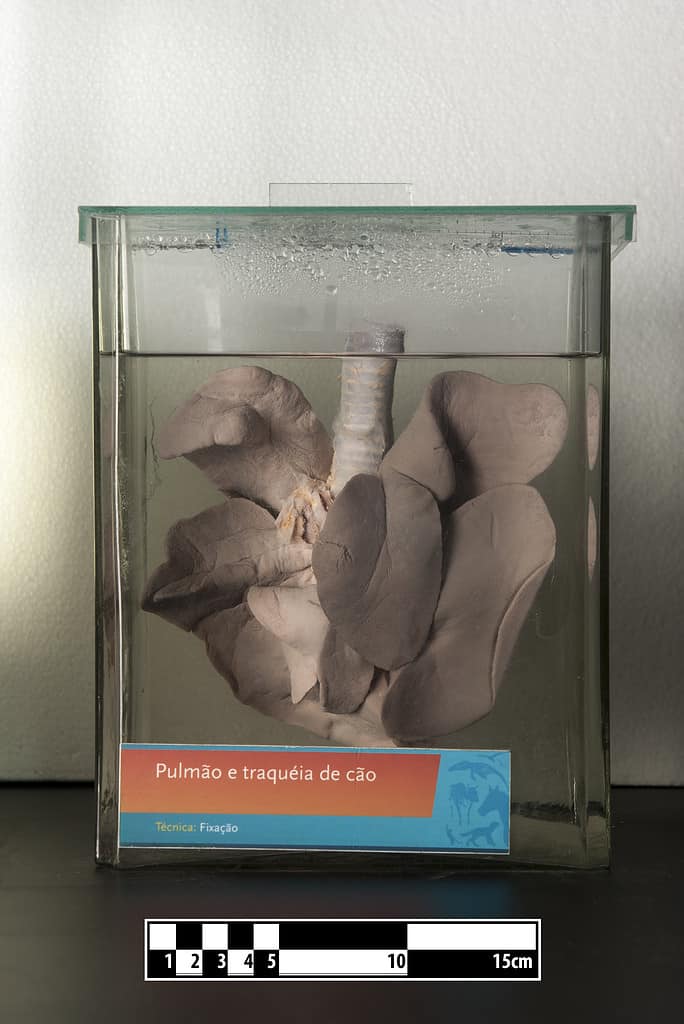The trachea is often simply referred to as the windpipe and it has an important function to play in the respiratory system. The windpipe is part of the lower respiratory system, despite its central to upper location. The trachea runs from the bottom of the throat, down, and between the lungs and is responsible for passing air along through the upper respiratory tract.
It’s relatively small in diameter, only about an inch, and is 5 inches long. Cricoid cartilage is the connective tissue that holds the larynx and windpipe together. If you’ve ever seen a ventilation tube at a construction site, the trachea features a similar design. There are several hardened rings, evenly spaced down the length of the windpipe, and they simply hold it open.

The trachea is often simply referred to as the windpipe and it has an important function to play in the respiratory system.
©Emily frost/Shutterstock.com
Three Main Functions of the Trachea
While its primary responsibility is the transfer of air into the upper respiratory tract, the trachea has two, additional tasks. The first task is to keep the air warm and moist. Dry and/or cold air will inflame the air passageways throughout the lungs.
The second task of the windpipe is to serve as a shield against foreign particles, such as dust and grit. However, the trachea defends against more than just dust and grit, also removes or captures microorganisms that are harmful to the body.

Many animals, like humans, have a tracheal system as well.
©Author: Wagner Souza e Silva – License
Trachea in Animals
Many animals, like humans, have a tracheal system as well. For the most part, the function of the tracheal system in mammals and insects remains the same as it is in people.

Trachae are present in most insects, centipedes, and arachnids and they primarily consist of chitin.
©guraydere/Shutterstock.com
Insects
Trachae are present in most insects, centipedes, and arachnids and they primarily consist of chitin. These chitinous tubes are very tiny and very narrow. Many insects also breathe through a series of holes (spiracles), located on various parts of their body, depending on the insect.
Even with their different methods for taking in and expelling air, the function of the trachea remains the same. In many insects, the trachea branches off into very tiny air passageways known as tracheae. In humans, blood carries oxygen throughout the body. The air drawn through the spiracles serves this purpose.
Animals
Trachea typically operates the same way in animals as they do in humans. They feature the same connective tissues and the same shape. The only differences are the length and diameter, which change depending on the animal in question.
Like humans, the trachea serves three purposes in animals, exchange of oxygen through the lungs and upper respiratory system, protection, and defense against dust and microorganisms.
Trachea Pronunciation
Trachea is pronounced: tray – key – uh




